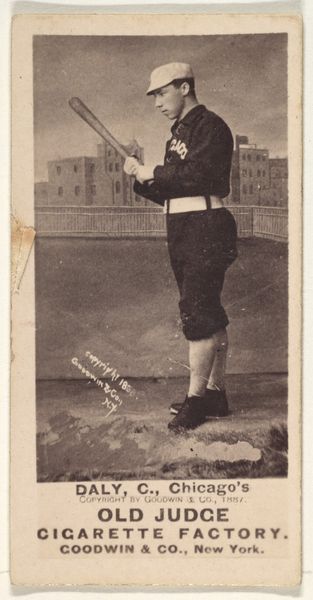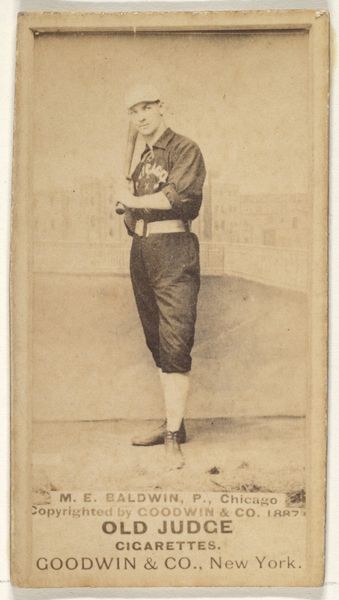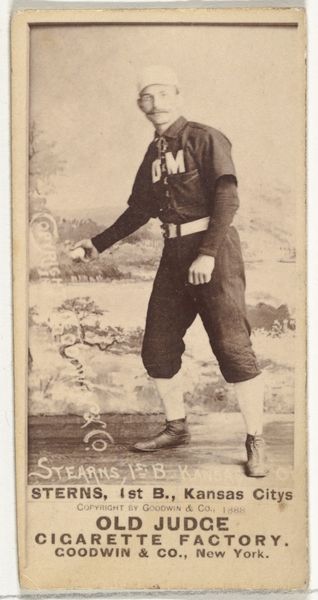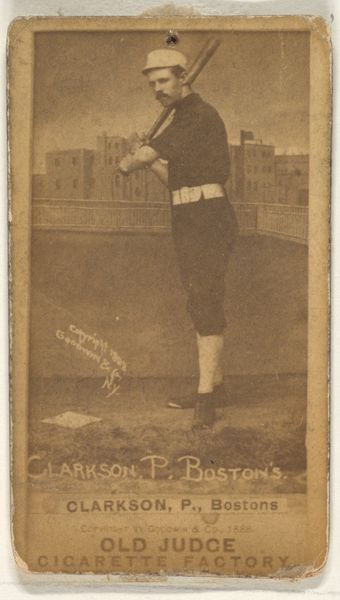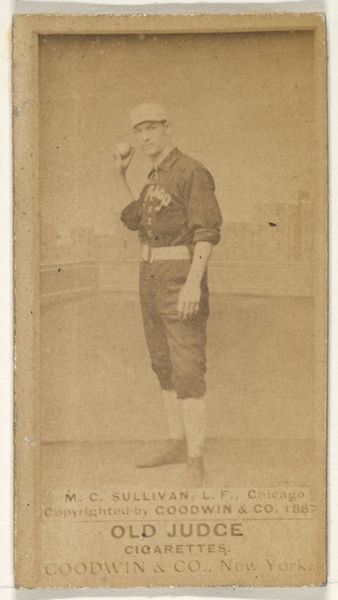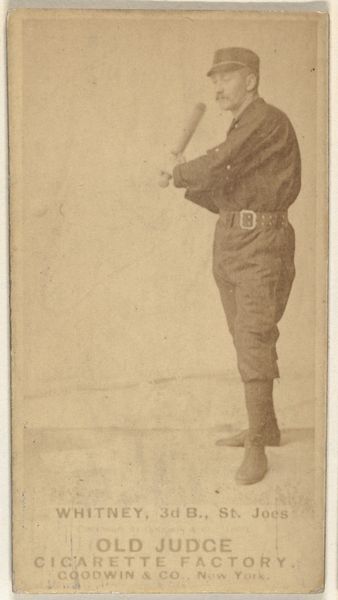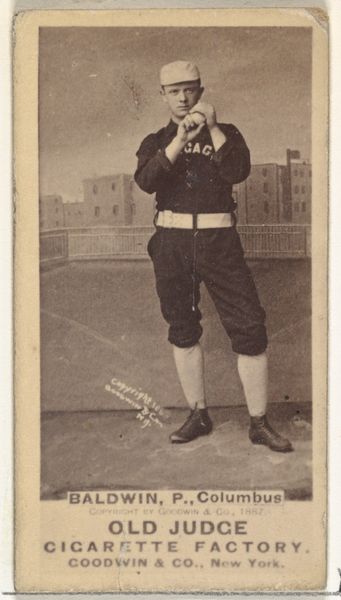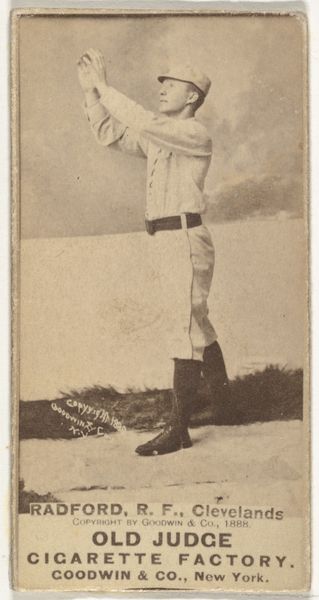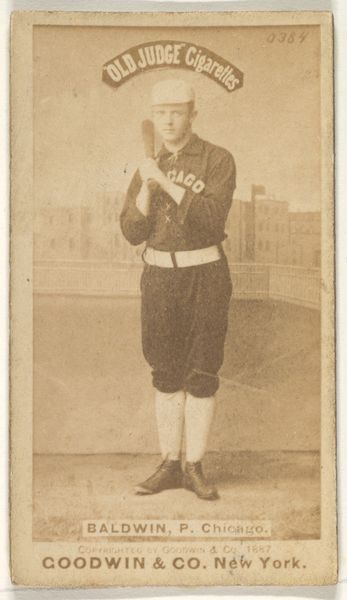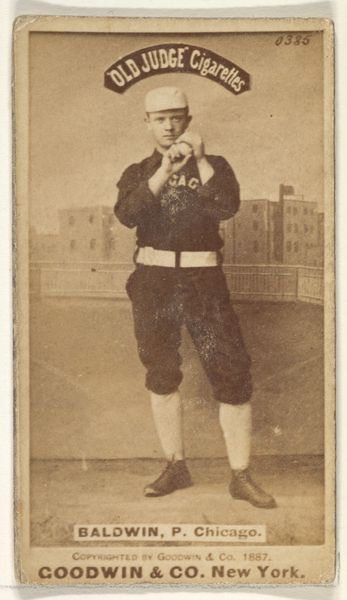
Tom Daly, Catcher, Chicago, from the Old Judge series (N172) for Old Judge Cigarettes 1887
0:00
0:00
lithograph, print, photography
#
portrait
#
lithograph
# print
#
landscape
#
baseball
#
figuration
#
photography
#
genre-painting
#
history-painting
Dimensions: sheet: 2 11/16 x 1 3/8 in. (6.9 x 3.5 cm)
Copyright: Public Domain
Editor: This lithograph, "Tom Daly, Catcher, Chicago," created in 1887 by Goodwin & Company, feels so simple. Just a ballplayer on a small card used for marketing Old Judge Cigarettes. How should we interpret it? Curator: Focus less on interpretation, and more on production. This lithograph isn’t just about baseball, it’s about the means of making and distributing images in the late 19th century. We must consider the materials—the paper, the ink, the lithographic stone. These baseball cards functioned as a commodity, distributed alongside another commodity: cigarettes. How does that relationship shift our understanding of the image? Editor: So, it's not about Daly, or even baseball really, but the commercial forces at work? Curator: Exactly. Consider the labor involved in each step—mining the materials, manufacturing the paper and ink, the lithographer’s skilled work. And it’s all tied to the consumption of cigarettes. This seemingly simple baseball card implicates a whole chain of material production and distribution. Editor: But how does the aesthetic factor in, though? Curator: The aesthetics reinforce the commodity status. The pose, the player’s name—it’s all designed to be collected, traded, and consumed as part of the Old Judge Cigarettes brand experience. Think about who had access to it? Was it aimed towards the working class, who also played baseball? Editor: Right, because smoking wasn't as stratified economically back then, meaning that this card had much wider audience, socioeconomically. So it challenges traditional notions of art by democratizing it across a broader consumer base, interesting. Curator: Precisely. It challenges us to look beyond the surface and see the network of materials, labor, and capital that brought it into being. It pushes the definition of art into one based on materiality, not genius. Editor: That's given me a whole new perspective. I hadn't considered it as a document of industry itself. Curator: Indeed, we see that its value resides in its complicated production process, rather than its surface depiction.
Comments
No comments
Be the first to comment and join the conversation on the ultimate creative platform.
